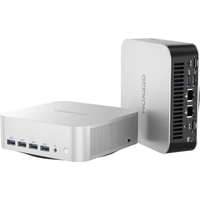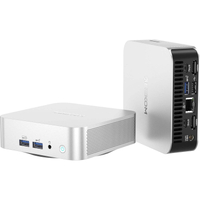Sick of laptop docks and spaghetti cables, I moved my entire daily workflow to a Windows 11 PC no bigger than a bagel
A quiet mini PC proves a far cleaner solution for my busy desk than a docked laptop with a mess of trailing wires and adapters.
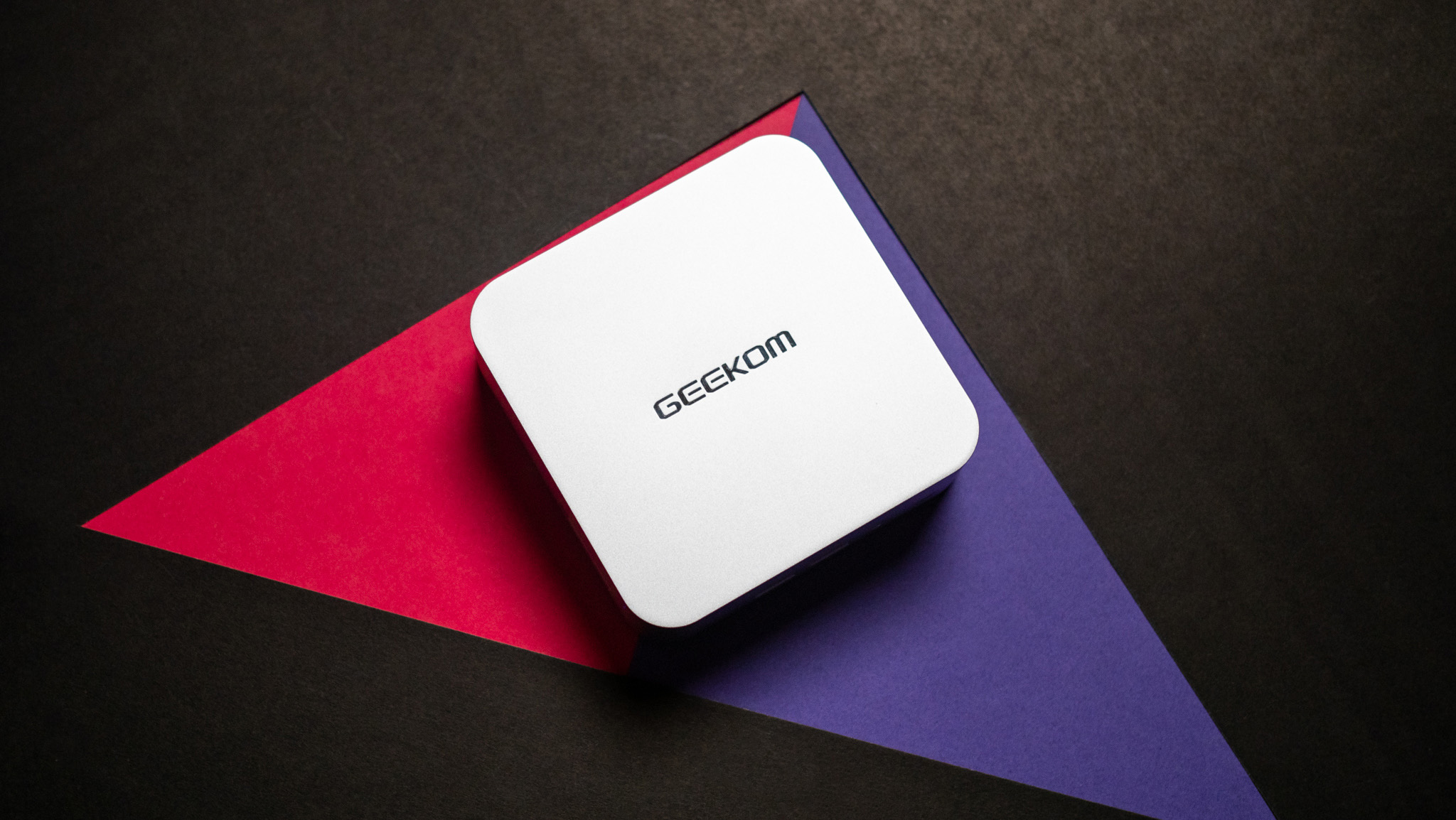
As fun as it can be to test the latest PC hardware like NVIDIA's $2,000 GeForce RTX 5090 Founders Edition graphics card, I don't particularly enjoy writing articles with the same gaming computer I use in my downtime. My bulky Windows 11 files and folders are neatly organized, rarely popping up in places I don't want them, but there's still a certain level of zen achieved when the end of a work day triggers a disconnecting shutdown.
To this day, I maintain that the "ultimate" Windows 11 experience is often found on laptops more than on a desktop PC because you can access touchscreens, guaranteed built-in Wi-Fi and Bluetooth connectivity, and a genuine use for power-saving plans that try to incorporate with flaky sleep and hibernate modes. Sure, Microsoft has some serious improvements to make in the latter category, but there is a third option that I somehow overlooked.
My colleagues and I have tested our fair share of mini PCs, with the excellent Beelink SER9 and Geekom A8|A7 standing out as stellar favorites. I've even tested Geekom's earlier models myself, but I was still in the mindset that they weren't powerful enough to handle my needs or even capable of replacing my dug-in habits with my desktop PC's environment. Granted, most of that arrogance comes from a stubborn refusal to try anything new, but a recent situation sparked a "lightbulb moment."
Mini PCs vs. laptops and docking stations
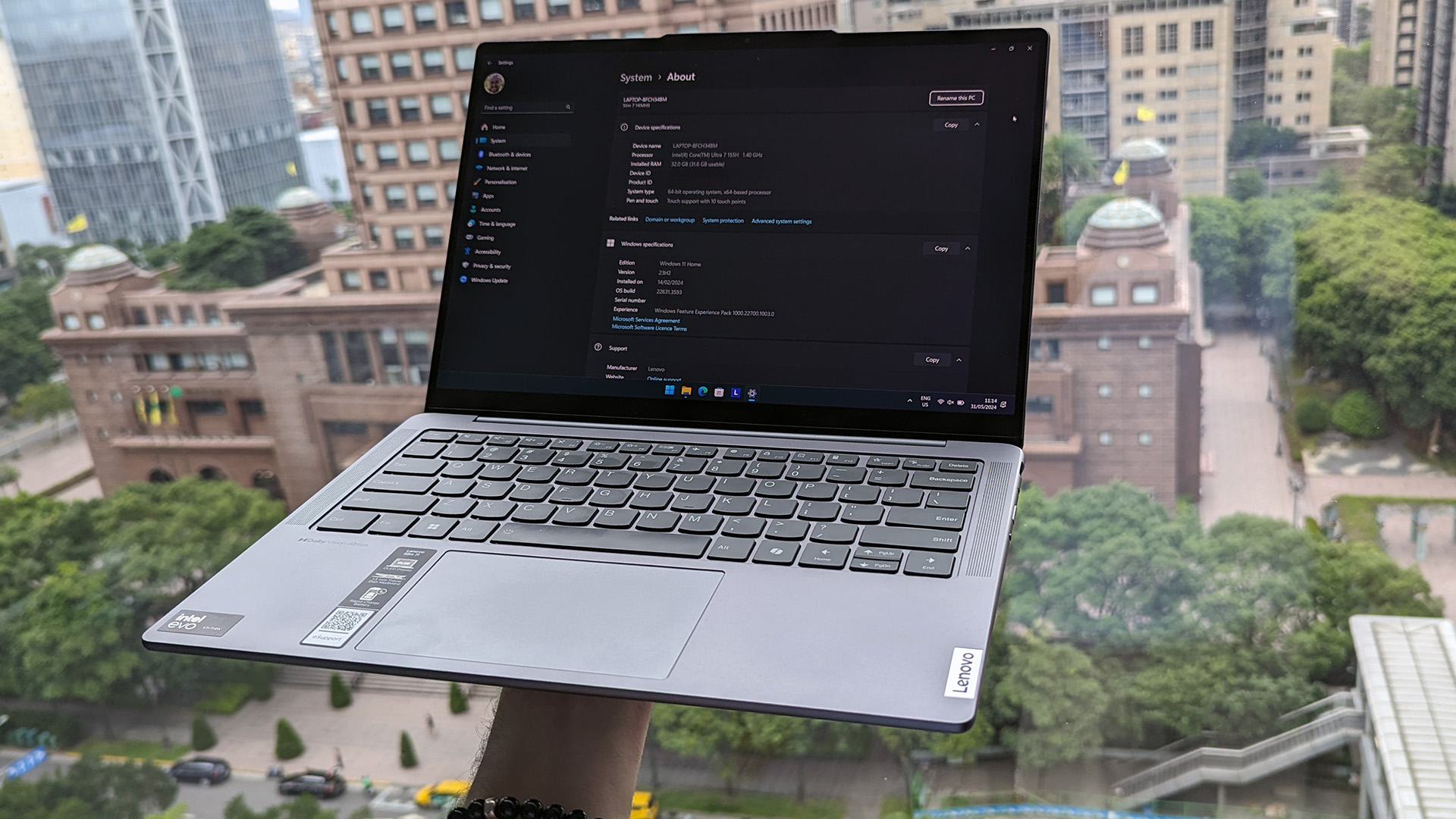
I've tested my fair share of Windows laptops, with some high-end options proving entertaining in their moments but too excessive to warrant adopting into my daily workflow. Surprisingly, Lenovo's previous-gen Slim 7i 14 (Gen 9) won my affection more than any other despite its compact chassis and relatively plain appearance. For me, it had it all: OLED touchscreen, Windows Hello for face-recognition logins, and a proper mix of USB-A, USB-C, and full-size HDMI-out ports alongside a side-mounted power button (a point of contention among my colleagues, but I like them.)
It came around the world with me for various press events and habitually became a go-to machine for my home office because everything was already set up exactly how I wanted it. The best part was that none of my personal documents, photos, or games were muddying up the desktop and Start menu; it was a pure work-centric PC. So, if I already have two monitors and space for a dedicated mouse and keyboard, why wouldn't I hook the laptop to my desk setup? Let me explain.
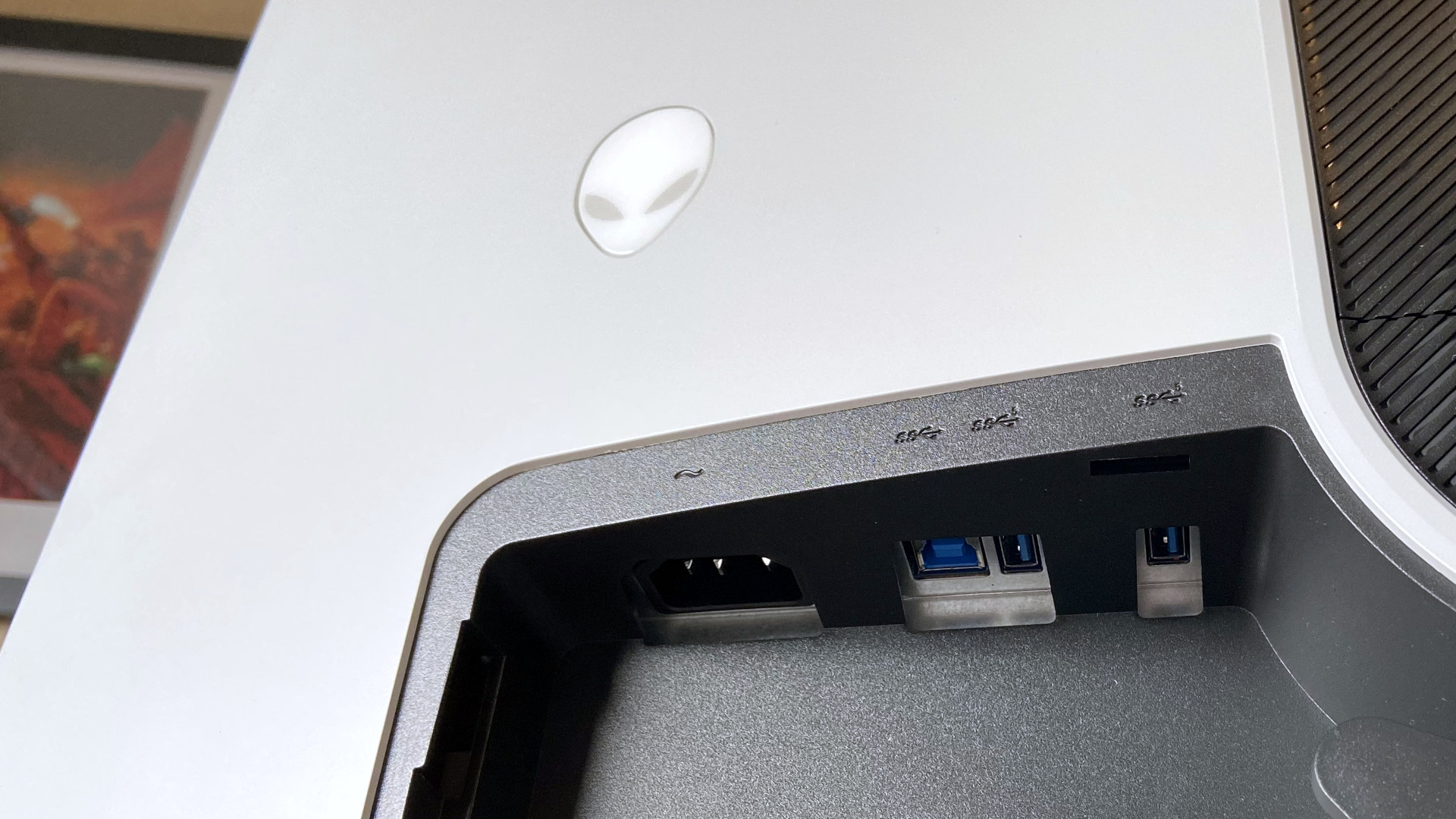
First, unlike its business-centric ThinkPad range, Lenovo's 'Slim' laptops don't allow the external power button to have any effect while the lid is closed. So, while I can use it closed and still enjoy a single external monitor via its HDMI port or several with one of the best Thunderbolt 4 docks, I have to physically open the laptop whenever I want it to wake from sleep or power up from a complete shutdown. It's less than ideal, especially since I prefer to use UGREEN's basic $20 laptop stand and keep it vertical to save space.
It's enough to discourage me from awarding it a permanent place on my desk, and I gradually return my entire workflow to an overpowered gaming desktop. If the solutions involve leaving a laptop open with nothing happening on its screen or pulling it out of its cradle to pry it back to life with a life-support system of USB hubs and display docks hanging from its ports, then it isn't worth the effort. Plus, these daily annoyances mess with my feng shui, man.
Geekom's high-spec but miniature solutions
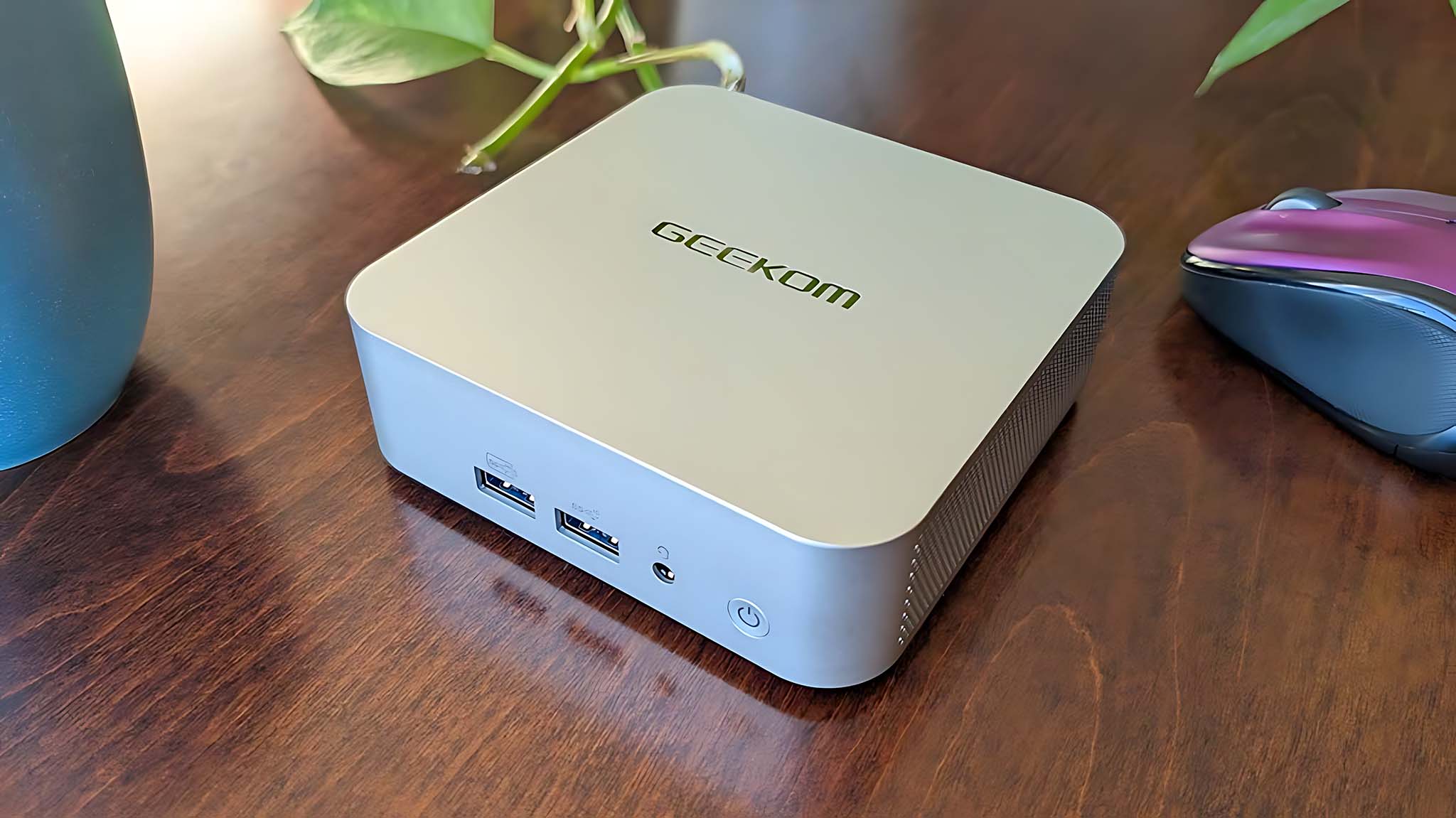
"If only I had a few more ports and an easier way to boot a second PC without switching a handful of cables." My pondering led to a quick realization that a mini Windows PC solves practically all of my issues, especially one with at least two HDMI-out ports and enough RAM to handle Google Chrome without breaking down into a sluggish mess. Sure, I could settle for a Geekom A6 at around $449, but the company's top-end A8 Max boasts AMD's Ryzen 9 8945HS processor with a built-in NPU alongside 32GB of RAM, and I'll benefit from the extra USB ports on the latter.
Don't sleep on mini PCs. They're an unappreciated third option between desktops and laptops, and I'm extremely happy with mine.
To clarify, the Geekom A8 Max sells for just shy of $1,000, and I'm not recommending its spec sheet to everyone as an implied necessity. This is a top-end, enthusiast-grade mini PC that solves all my needs and sets me up for years of work without worrying about exhausting storage space or needing extra RAM. Most Windows users can settle for one of the best mini PCs, including a more affordable option like the high-scoring Geekom A6 for around $450, and still benefit from a wealth of I/O options, including dual HDMI-out ports for external displays.
So, I have all of my peripherals connected via a USB hub in Alienware's AW2723DF monitor and the rear USB-C ports of the A8 Max, two displays hooked up to the respective HDMI-out ports, and an Ethernet cable connected to the 2.5G LAN port for wired networking. What more could I ask for? Oh, right, a dedicated power button that works as expected. Nice.
I'm telling you: don't sleep on mini PCs. They're an unappreciated third option between desktops and laptops, and I'm extremely happy with mine. An internal fan keeps the components cool under pressure, but for the most part, this miniature Geekom unit remains silent on my desk as I get most of my work done in a single browser app with a frankly embarrassing number of Chrome tabs.
Geekom A8 Max | $999 at Amazon.com
AMD Ryzen 9 8945HS processor, 32GB DDR5-5600 MT/s RAM, 2TB Crucial P3 Plus M.2 2280 SSD, Wi-Fi 6E, dual 2.5G LAN, Bluetooth 5.2, USB4.
👉 See at: Amazon (US)
👉 See at: Amazon (UK)
Geekom A6 | $449 at Amazon.com
AMD Ryzen 7 6800H processor, 32GB DDR5-6400 MT/s RAM, 1TB M.2 2242 SSD, Wi-Fi 6E, 2.5G LAN, Bluetooth 5.2, USB4.
👉 See at: Amazon (US)
👉 See at: Geekom.com (UK)

Ben is a Senior Editor at Windows Central, covering everything related to technology hardware and software. He regularly goes hands-on with the latest Windows laptops, components inside custom gaming desktops, and any accessory compatible with PC and Xbox. His lifelong obsession with dismantling gadgets to see how they work led him to pursue a career in tech-centric journalism after a decade of experience in electronics retail and tech support.
-
Brian Grier While I understand your pain in jostling cables, you might want to consider using video switch(es) and USB switches to share your monitor(s) and peripherals with multiple PCsReply
I have 4 PCs (Orange Pi, Mac Mini (m1), thunderbolt docking station (for my work and personal laptops,) and my gaming PC. These all share two monitors (wqhd and fullhd) a single keyboard, mouse, a webcam along with my development android devices and cameras.
The only cable I ever have to move is the thunderbolt cable between laptops. Then I just press the button on the USB switch to select the computer I want to use. The video switches automatically select the correct input, if I only have one device on (otherwise I have to use a remote to change the video source). -
systemBuilder2 1. $999 for an old CPU (8945hs) is a pretty steep price, please shop around.Reply
2. The 6800h is a RDNA2 6800m iGPU (12cu's) so only esports are playable.
3. I use a $12 asus candybar adapter (aliexpress) so my laptop needs only 1 single USB plug-in.
4. I use a KCEVE 4-way KVM so that my desktop, my laptop, and my Raspberry Pi can all share the same 4K TV screen, keyboard, mouse, and camera, all going in via 1 USB and 1 HDMI port. This is a 4K@60Hz KVM and switching between inputs happens instantly (less than 1 second).
5. MiniPCs are cool, but I'd wait ~2 months until the new Ryzen5 Strix Halo ones come out with 4070 iGPU performance !! -
BaritoneGuy What about a monitor with a built in dock? I have a 34” ultrawide with a bunch of ports.Reply
One USB C cable to my laptop is all that is needed. I get Ethernet, charging, USB and it is less cables than this solution would need. For this PC you need a power brick, monitor cable, Ethernet, and USB upstream for the ports on the monitor to work.
I have power and Ethernet into the monitor which has good cable management. -
TheBeav111 Reply
Only eSports are playable??? What does that mean? If it can play Rimworld or Stellaris I'm happy lol... Aren't most eSports AAA? I'm not into eSports at all but I'm a network engineer and built my first computer in 97...systemBuilder2 said:1. $999 for an old CPU (8945hs) is a pretty steep price, please shop around.
2. The 6800h is a RDNA2 6800m iGPU (12cu's) so only esports are playable.
3. I use a $12 asus candybar adapter (aliexpress) so my laptop needs only 1 single USB plug-in.
4. I use a KCEVE 4-way KVM so that my desktop, my laptop, and my Raspberry Pi can all share the same 4K TV screen, keyboard, mouse, and camera, all going in via 1 USB and 1 HDMI port. This is a 4K@60Hz KVM and switching between inputs happens instantly (less than 1 second).
5. MiniPCs are cool, but I'd wait ~2 months until the new Ryzen5 Strix Halo ones come out with 4070 iGPU performance !! -
marorun Reply
I personally have the beelink SER9 got it at blackfriday deal for 700$.systemBuilder2 said:1. $999 for an old CPU (8945hs) is a pretty steep price, please shop around.
2. The 6800h is a RDNA2 6800m iGPU (12cu's) so only esports are playable.
3. I use a $12 asus candybar adapter (aliexpress) so my laptop needs only 1 single USB plug-in.
4. I use a KCEVE 4-way KVM so that my desktop, my laptop, and my Raspberry Pi can all share the same 4K TV screen, keyboard, mouse, and camera, all going in via 1 USB and 1 HDMI port. This is a 4K@60Hz KVM and switching between inputs happens instantly (less than 1 second).
5. MiniPCs are cool, but I'd wait ~2 months until the new Ryzen5 Strix Halo ones come out with 4070 iGPU performance !!
It play cyberpunk medium settings at 60 fps and many others games at medium to high settings and esport it reach over 100 fps easily.
Still most games I play are on the cloud (GeForce now, boosteroid)
What I love is it small and take no space and it can run the rare games I can't run on the cloud.
It even have frame gen as it based on rdna 3.5 (its the amd ai hx 370 with 16 gpu core radeon 890m) at the price I paid for it it's a great value. -
Ben Wilson ReplyBrian Grier said:While I understand your pain in jostling cables, you might want to consider using video switch(es) and USB switches to share your monitor(s) and peripherals with multiple PCs
I have 4 PCs (Orange Pi, Mac Mini (m1), thunderbolt docking station (for my work and personal laptops,) and my gaming PC. These all share two monitors (wqhd and fullhd) a single keyboard, mouse, a webcam along with my development android devices and cameras.
The only cable I ever have to move is the thunderbolt cable between laptops. Then I just press the button on the USB switch to select the computer I want to use. The video switches automatically select the correct input, if I only have one device on (otherwise I have to use a remote to change the video source).
You're right about the switch; I have at least one switch for my secondary monitor: a cheap UGREEN 2-to-1 HDMI that feeds a basic 1080p 60Hz screen. KVM switches are tempting, too, but my keyboard and mouse are wireless anyway, so I tend to leave the dongles in one machine and connect cables to the other, which isn't too bad.
Your setup sounds extra cool, though, and something that I'll probably 'graduate' to when I next hit payday. -
Ben Wilson ReplysystemBuilder2 said:1. $999 for an old CPU (8945hs) is a pretty steep price, please shop around.
2. The 6800h is a RDNA2 6800m iGPU (12cu's) so only esports are playable.
3. I use a $12 asus candybar adapter (aliexpress) so my laptop needs only 1 single USB plug-in.
4. I use a KCEVE 4-way KVM so that my desktop, my laptop, and my Raspberry Pi can all share the same 4K TV screen, keyboard, mouse, and camera, all going in via 1 USB and 1 HDMI port. This is a 4K@60Hz KVM and switching between inputs happens instantly (less than 1 second).
5. MiniPCs are cool, but I'd wait ~2 months until the new Ryzen5 Strix Halo ones come out with 4070 iGPU performance !!
I agree that Strix Halo is tempting, but one of my biggest reasons for moving away from my desktop is that I didn't want to play games on the work machine. It's not that I don't have any discipline, but it's nice to have games 'separated' from everything else. The mini PC practically only has a browser and a few key apps installed for work, with the rest of the storage space holding Photoshop project files and other bulky backups.
The KVM switch is clever, though. It's probably better for me than a full-blown docking station, especially when the mini PC already has a massive I/O selection. As it stands, I only swap out a cable to my audio mixer and connect a USB-C cable to my keyboard when I switch, but if I can cut that down to a button, that would be awesome. -
Ben Wilson ReplyBaritoneGuy said:What about a monitor with a built in dock? I have a 34” ultrawide with a bunch of ports.
One USB C cable to my laptop is all that is needed. I get Ethernet, charging, USB and it is less cables than this solution would need. For this PC you need a power brick, monitor cable, Ethernet, and USB upstream for the ports on the monitor to work.
I have power and Ethernet into the monitor which has good cable management.
Yeah, the Alienware monitor I mentioned in the article has four USB-A ports, which hold my peripheral dongles and a spare cable to connect an Xbox controller. It could be faster, though, and upgrading to a Thunderbolt/USB4 monitor is incredibly tempting. We'll see what discounts happen soon, and I might upgrade! -
Ben Wilson ReplyTheBeav111 said:Only eSports are playable??? What does that mean? If it can play Rimworld or Stellaris I'm happy lol... Aren't most eSports AAA? I'm not into eSports at all but I'm a network engineer and built my first computer in 97...
I thought eSports players dropped all the settings to the minimum? (lol)
Then again, my idea of eSports is still Quake 3 Arena. I'm not down with the kids and their Valorants.
